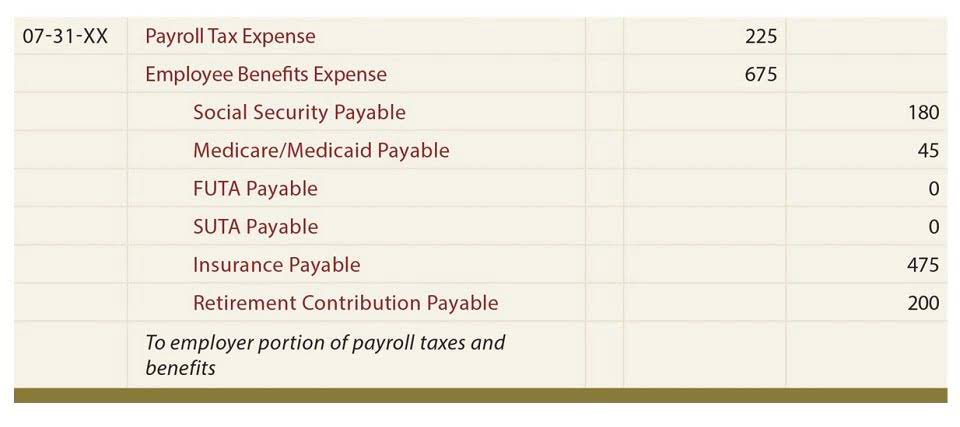Content
- Packaging materials
- Variable Costs Definition
- Variable cost definition
- What Is a Tax Credit and Which Credits Might Apply to Your Business?
- Variable Costs and Operating Leverage
- How Do You Determine Variable vs. Fixed Costs for a Product?
- Do You Need to Update Your Business Insurance When Working From Home?
- Variable Cost

You can also use a simple formula to calculate your fixed costs. Your cost structure—essentially, your ratio of fixed to variable costs—is a key element in the resilience of your business. Proper distribution of fixed versus variable costs is fundamental to being able to survive the tough times and capitalize on opportunities. Running a company out of their home can dramatically reduce their fixed costs, allowing them to be more profitable. The relative lack of space may limit the amount of business they can conduct long term, but it’s a viable option if they’re just starting out or plan to remain a small operation.
If McDonald’s produces 1 Big Mac, it may cost $5 for the ingredients. By contrast, if it makes 1,000 Big Macs, the variable cost will fall significantly as it benefits from economies of scale. In turn, it is able to negotiate a discount with its suppliers for key ingredients such as beef, lettuce, and buns. So as McDonald’s makes more Big Macs, it is able to lower its marginal variable costs.
Packaging materials
Lastly, understanding the difference between fixed and variable costs is important to be able to leverage economies of scale as you grow. But there are a couple of important reasons that founders should have a strong understanding of how fixed and variable costs impact business operations. Some variable costs can be indirect, however, such as utilities.
Variable costs aren’t a “problem,” though — they’re more of a necessary evil. They play a role in several bookkeeping tasks, and both your total variable cost and average variable cost are calculated separately.

A fixed cost is a cost that does not change with an increase or decrease in the amount of goods or services produced or sold. These costs have a mix of costs tied to each unit of production and a fixed cost which will be incurred regardless of production volume.
Variable Costs Definition
To explain, each additional good a business produces represents a variable cost. For example, McDonald’s will have a variable cost it pays to produce each Big Mac. For each one it produces, there are costs in the form of ingredients, such as the hamburger, bun, lettuce, gherkin, and other ingredients. It’s in your best interest to spread out your fixed costs by producing more units or serving more customers.
So in our knife example above,if you’ve made and sold 100 knife sets your total number of units produced is 100, each of which carries a $200 variable cost and a $100 potential profit. As production volume increases, it is often possible to negotiate, or renegotiate, purchasing agreements to further reduce your per-unit cost. The higher the production volume, the greater your negotiating power. A business consultant has many variable costs because she does many different types of contracts that incur their own specific expenses. She also has to travel to visit the client and the cab fare is a variable expense.
Variable cost definition
A variable cost is an expense that changes in proportion to production or sales volume. A change in your fixed or variable costs affects your net income.

Be careful that you don’t mix up variable cost with variable costing, which is an accounting method used to report variable cost. Variable costs are the costs incurred to create or deliver each unit of output. So, by definition, they change according to the number of goods or services a business produces. If the company produces more, the cost increases proportionally. It’s amazing how Uber has been able to convince Wall Street that it is primarily a fixed cost tech platform.
What Is a Tax Credit and Which Credits Might Apply to Your Business?
She pays an assistant hourly to help her and this billable labor is also a variable cost. Direct labor may not be a variable cost if labor is not added to or subtracted from the production process as production volumes change. The level of variable cost is influenced by many factors, such as fixed cost, duration of project, uncertainty and discount rate. An analytical formula of variable cost as a function of these factors has been derived. It can be used to assess how different factors impact variable cost and total return in an investment. In cost accounting, the high-low method is a way of attempting to separate out fixed and variable costs given a limited amount of data. Variable costs change based on the level of production, which means there is also a marginal cost in the total cost of production.
Profit-maximizing manufacturing companies use the AVC to help them decide at which time they should end the production for a specific good. If the price they receive for the product is higher than the AVC, it is one indicator of a profitable product. While variable costs tend to remain flat, the impact of fixed costs on a company’s bottom line can change based on the number of products it produces. The price of a greater amount of goods can be spread over the same amount of a fixed cost. In this way, a company may achieveeconomies of scale by increasing production and lowering costs.
Variable Costs and Operating Leverage
Production supplies are the indirect raw materials needed during the manufacturing or assembly process. One example is machine oil, which is difficult to measure based on how much or how often the machines are used. Because the cost of machine oil varies with production volume, it can be considered a variable cost. For example, a foodservice company might spend about $500 on plastic wrap to pack 2,000 sandwiches. A product profitability analysis might determine that production costs could be lowered if they bought plastic wrap in bulk.
- Materials costs will drop when production drops, and pick back up as production does.
- For example, if your company sells sets of kitchen knives for $300 but each set requires $200 to create, test, package, and market, your variable cost per unit is $200.
- Production supplies are the indirect raw materials needed during the manufacturing or assembly process.
- Variable costs are typically much easier to modify than fixed costs, which makes it very important for business leaders to pay attention to them on a regular basis.
- A portion of the wage for a salesperson may be a fixed salary and the rest may be sales commission.
- Therefore, many managers monitor profitability by dividing the variable costs by the total revenue to determine the costs as a percentage of the sales.
- If you’re a software company, for example, then you won’t have a raw materials cost as you aren’t actually producing a physical product.
The company purchases one unit of raw material for each widget it makes. Each unit of raw material costs one dollar and each hour of labor costs $10. Businesses that receive credit card payments from their customers will incur higher transaction fees as they deliver more services. The more products your company sells, the more you might pay in commission to your salespeople as they win customers. For example, a company executive’s base salary would be considered a fixed cost because the dollar amount owed by the company is outlined in an employment contract signed by the relevant parties. Marginal cost is the change in total cost that comes from making or producing one additional item. They may also include reasonable, incremental meal, accommodation and travel expenses.
Your company has expended resources to acquire an asset that it has not yet consumed. For example, if you buy a van to use in your business, you depreciate it over time.
How is TFC TVC and TC calculated?
It can be obtained by subtracting total fixed cost from total costTVC = TC – TFCTotal TC:- The total amount of money spends on all the factors fixed and variable of production is called total cost.It can be obtained by summing up total fixed cost and total variable costTC = TFC + TVCThe relationship among TC TFC and …
In accounting, all costs can be described as either fixed costs or variable costs. Variable costs are inventoriable costs – they are allocated to units of production and recorded in inventory accounts, such as cost of goods sold. Fixed costs, on the other hand, are all costs that are not inventoriable costs. All costs that do not fluctuate directly with production volume are fixed costs. Fixed costs include various indirect costs and fixed manufacturing overhead costs.
In economies of scale, variable costs as a percentage of overall cost per unit decrease as the scale of production ramps up. An employee’s salary would be considered a fixed cost, while sales commissions are variable. While fixed costs do change over a long-term period, this change isn’t related to production.
Supplies consumed during the production process, such as machinery oil. Mary Girsch-Bock is the expert on accounting software and payroll software for The Ascent. Rent – the rent you pay on your office, factory, and storage space. Insurance – the liability insurance you hold on your business. Depreciation – the gradual deduction of an asset’s decline in value. A physical asset is gradually expensed over time down to a value of $0.
Fixed costs are costs that don’t change in response to the number of products you’re producing. And, because each unit requires a certain amount of resources, a higher number of units will raise the https://www.bookstime.com/s needed to produce them. Each component of a car is a variable cost, including the tires. For example, every car that is produced must have a set of four tires. If the tires cost $50 each, the tire costs for each manufactured car are $200.
Over a five-year horizon, all costs can become variable costs. It can change its entire labor force, managerial as well as line workers.

The success of a company often depends on the ability to make educated and informed predictions as to how the business venture will be affected by different operating conditions. One of the most important factors in making such predictions is determining the proportion of fixed costs to variable costs.
Do You Need to Update Your Business Insurance When Working From Home?
Commission is also a variable cost as salespeople only get paid if they sell a product or service. For example, let’s say that Company ABC has a lease of $10,000 a month on its production facility and produces 1,000 mugs per month.
And as we’ve already established, cutting variable costs (i.e. outsourcing, replacing parts, optimizing processes) is much easier than cutting fixed costs. You’ll be dealing a lot with these costs throughout your time as a consultant. So get familiar now with how these costs impact a business, and how a variable-cost-based business model differs from a fixed-cost-based business model. Variable cost is one of the two major cost categories that you’ll find in nearly every business endeavor. Together with fixed costs, they form the foundation of all corporate expenses. Even in the top business schools we teach at, there is some confusion over what exactly is defined as a variable cost.
Variable Cost
The less variable cost there is, the more the additional revenue earned will contribute to the overall profit. These other methods generally have a higher fixed cost, but a lower variable cost than metal spinning. You might pay to package and ship your product by the unit, and therefore more or fewer shipped units will cause these costs to vary. The higher your total cost ratio, the lower your potential profit. If this number becomes negative, you’ve passed the break-even point and will start losing money on every sale. Your average variable cost is ($600 + $450) ÷ 25, or $42 per unit.

Comentarios recientes